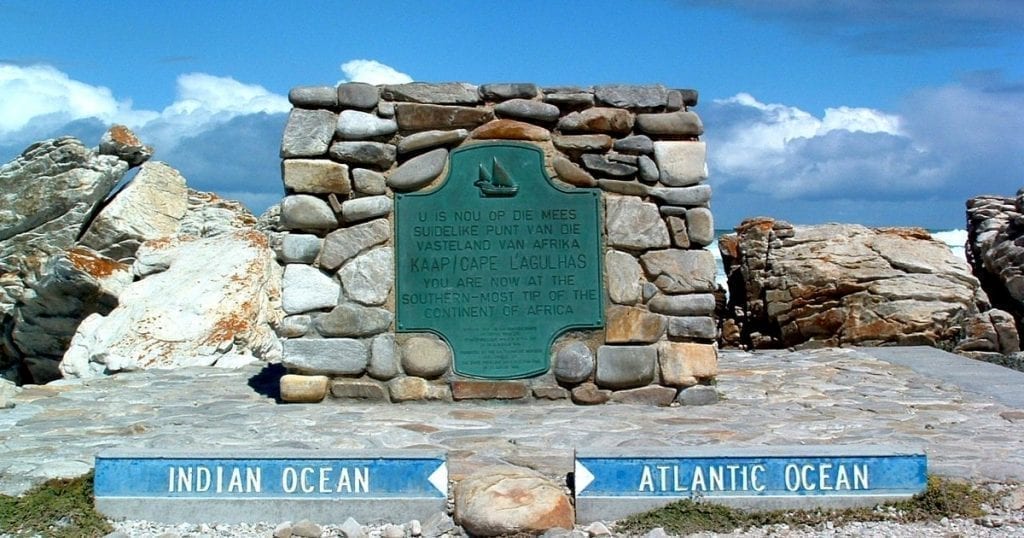
It’s also the spot at which to have one’s photo taken at the official southernmost tip of Africa, where there is a stone plaque that marks the place – right on the beach.
The plaque forms part of a wooden boardwalk that is easy to stroll and which offers incredible views over the crashing seas. Confusingly, the point at which the Agulhas current meets the Benguela current tends to fluctuate seasonally between Cape Agulhas and Cape Point. But the official meeting place, decided by the International Hydrographical Organisation, is unquestionably Cape Agulhas – lest there be contention amongst your party.
Most visitors though consider the beautiful, historic red and white Cape Agulhas Lighthouse as the icon that denotes the tip of Africa. Certainly it’s worth climbing to the top, even if you’re intimidated by the wooden flights of steps that are little more than ladders in parts, or frightened of heights.
West of the lighthouse (you can drive from the lighthouse directly into the reserve) is the entrance to the Agulhas National Park where there is a wide range of accommodation. The clear night skies and access to the rocky coastline of the Cape of Agulhas are highlights to a stay here.
Historically, the cape has been known to sailors as particularly hazardous – notorious for winter storms and huge rogue waves that can reach a spectacular height of 30 metres – so it’s no surprise that it’s littered with wrecks, one of which – the Meisho Maru – lies in the Agulhas National Park. North east of the official meeting place of two oceans are the little towns of L’Agulhas and Struisbaai.
The two seaside villages seem to melt into one another providing a string of seaside cottages from which to experience the warm and beautiful sandy beaches. And on the other side of the towns is De Mond Nature Reserve. Cape Agulhas and the combination of incredible beauty, beachside holiday fun and major nature reserves, is hard to beat.
Original Article: https://www.sa-venues.com